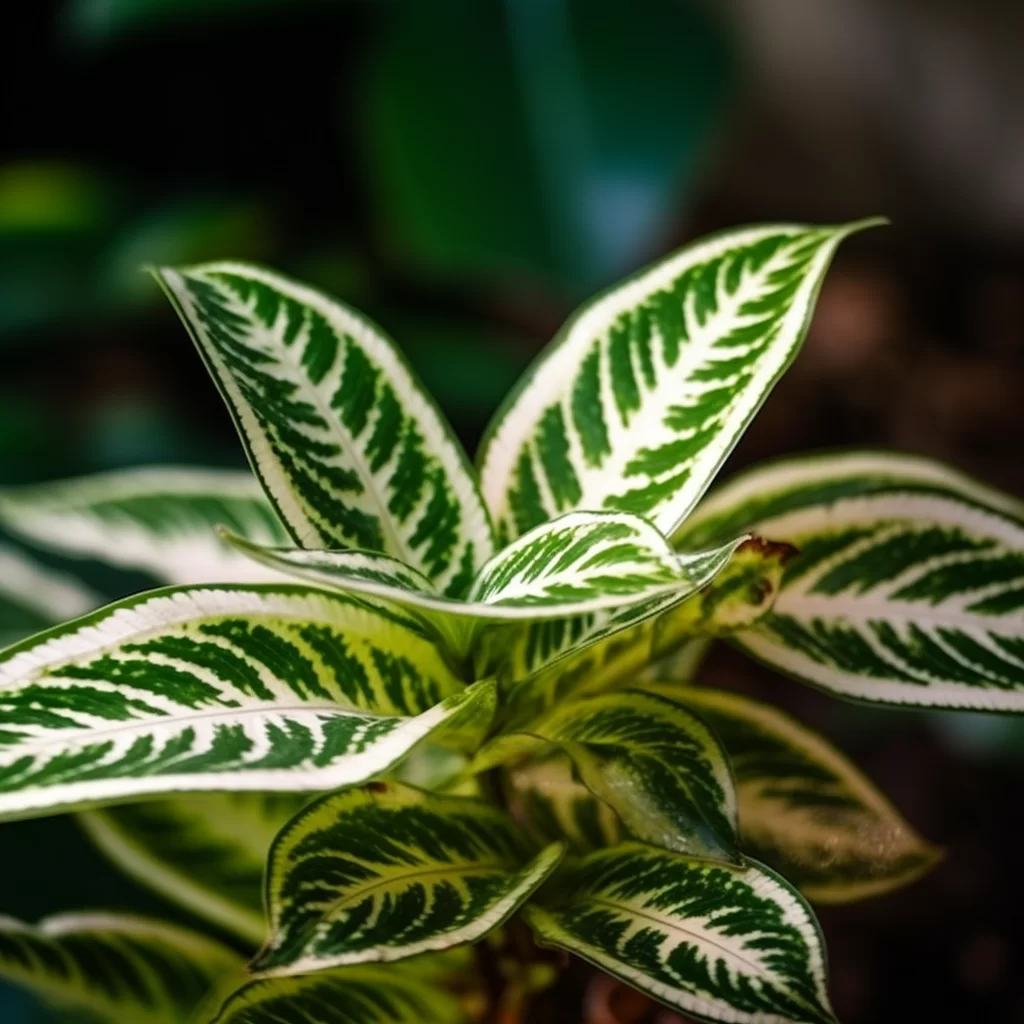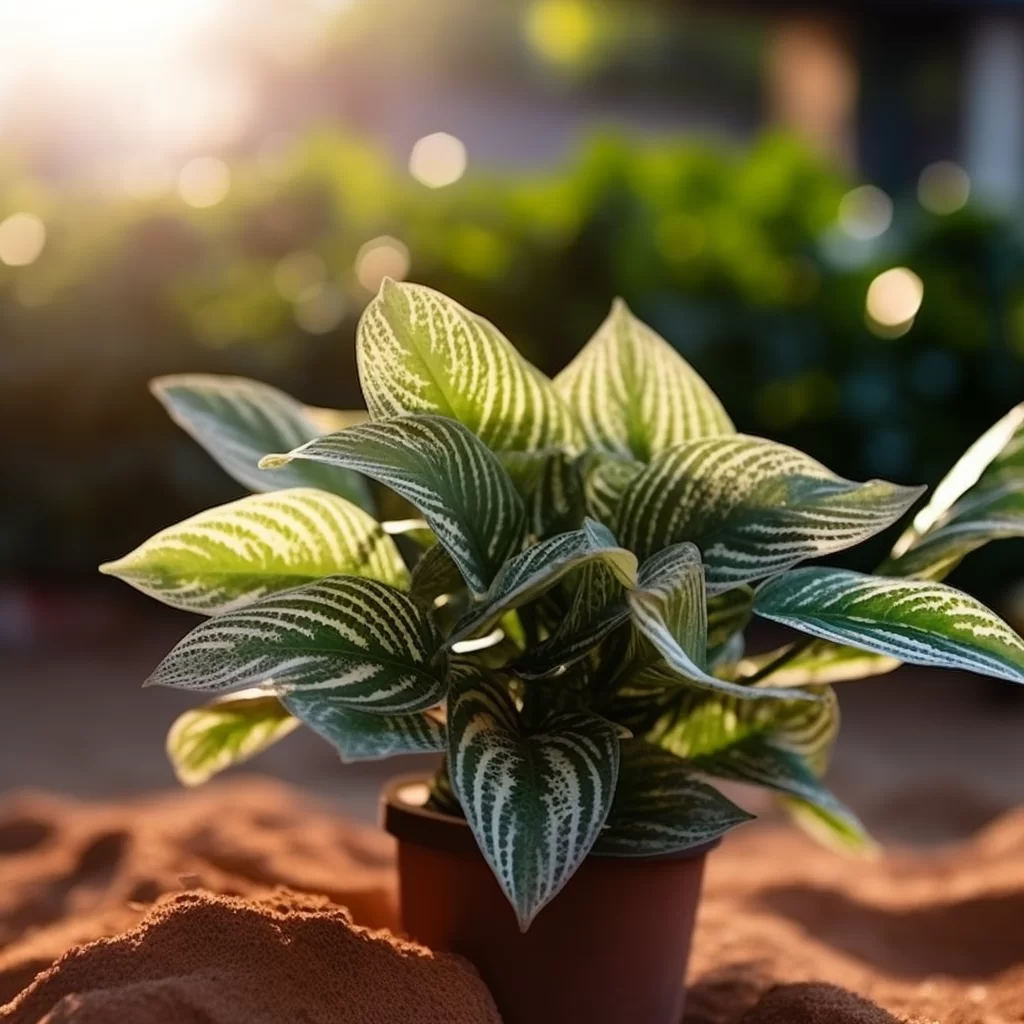Story of Day :
Contents
The Zebrina Plant: A Complete Guide and Care Tips
If you’re on the hunt for a distinct plant to spice up your indoor garden, you should definitely check out the zebrina plant.
Often referred to as the wandering jew, inch plant or spiderwort, this exotic beauty boasts eye-catching purple and green leaves that are sure to impress.
But don’t let its visual appeal be its only selling point – this little gem has many benefits beyond just being a pretty face.For starters, the zebrina is an incredibly low-maintenance plant that requires minimal attention and care.
It can thrive in various lighting conditions and doesn’t require frequent watering or fertilizing.
Additionally, it’s an excellent air purifier that removes harmful toxins from your home environment, making it ideal for those with allergies or respiratory issues.
So not only will this beautiful specimen add some pizzazz to your living space, but it’ll also contribute to a healthier atmosphere overall! Overall, if you’re looking for a unique indoor plant that’s both visually stunning and beneficial for your health and well-being – look no further than the zebrina! With its striking appearance and easy-care nature coupled with exceptional air-cleaning properties – it’s truly one of a kind!
Origin and Appearance

The zebrina plant is a fascinating herb that originates from Mexico but can also be found in other regions of Central America.
It is a perennial plant, which means it can grow for several years, and can reach an impressive height of up to two feet tall.
Its long stems trail along the ground or climb walls and trellises, creating an attractive display wherever it grows.One of the most remarkable features of the zebrina plant is its striking leaves.
The top side of each leaf is green, while the underside has a stunning purple hue that gives the herb its unique zebra-like appearance.
This distinct coloring makes it easy to identify this herb from others in your garden or elsewhere.
If you’re looking for an interesting addition to your indoor or outdoor space, consider planting a zebrina – you won’t be disappointed! In conclusion, with its vibrant colors and sprawling growth habit, the zebrina plant adds visual interest and beauty to any landscape design project or garden bed.
It’s no wonder this captivating herb has become so popular among gardening enthusiasts across North America! Whether you choose to grow it indoors as part of your collection or outdoors as ground cover or climbing foliage on walls and trellises; this hardy perennial will thrive with proper care and attention over time!
Care Tips

- Light: The zebrina plant prefers bright, indirect light but can also tolerate some shade.
Be careful not to expose it to direct sunlight for extended periods as this can scorch its leaves.
- Water: Water your zebrina when the top inch of soil feels dry but be careful not to overwater it as this can lead to root rot.
In general, watering once a week should suffice.
- Fertilizer: Feed your zebrina every two weeks during spring and summer with a balanced liquid fertilizer diluted in water according to package instructions.
- Potting mix: Use well-draining potting soil mixed with perlite or sand for optimal drainage.
- Humidity: The zebrina plant thrives in humid environments so misting it regularly or placing it near a humidifier can help keep it healthy.
Propagation
The zebrina plant is a popular houseplant, especially for those just starting their indoor garden journey.
Propagating this plant through stem cuttings is a great way to expand your collection without having to purchase new plants.
To do this, all you need to do is snip off a four-inch stem just below where the leaves attach and remove the lowest set of leaves.
Then, place the cutting in water or moist potting soil until roots begin to form.
Once they do, you can transplant it into its own pot and watch it grow into a beautiful new addition to your home.In addition to being easy to propagate, the zebrina plant has many other benefits that make it an ideal choice for indoor gardening.
It boasts striking purple and silver striped foliage that will add a pop of color and interest to any room in your house.
It’s also relatively low maintenance compared to other plants – simply water when the top inch of soil feels dry and keep it out of direct sunlight – making it perfect for busy individuals who don’t have much time or energy for upkeep.
With its ease of propagation and stunning appearance, the zebrina plant is definitely worth considering if you’re looking for a new houseplant!

Benefits
The zebrina plant, with its striking appearance, is not just a mere decorative addition to your living space.
This plant offers a multitude of benefits that make it an ideal choice for any green enthusiast.
One such benefit is its air-purifying ability; the zebrina can help remove harmful toxins from the air, creating a healthier environment for you and your family.
Additionally, the zebrina has medicinal properties that have been used by indigenous communities for centuries.
Its leaves are believed to have anti-inflammatory properties and can be crushed and applied topically to soothe wounds or burns.Apart from its health benefits, this stunning plant is also incredibly low maintenance.
It requires minimal water and can thrive in almost any lighting condition; making it perfect for those who love plants but lack green thumbs! The zebrina’s trailing vines also make it an excellent choice for hanging baskets or as a ground cover in larger indoor gardens.
With so much going on in its favour, there’s no doubt that the zebrina plant is more than just good looks – it’s a beneficial addition to any home!
- Air purification: Like many plants, the zebrina helps purify indoor air by removing pollutants such as formaldehyde and benzene.
- Mood booster: Research has shown that spending time around plants can improve mood and reduce stress levels.
- Creative inspiration: The zebrina’s unique foliage can inspire creativity and add an interesting touch to any room or garden.
 There are a few potential drawbacks that should be considered when making decisions about various options.
There are a few potential drawbacks that should be considered when making decisions about various options.
One of the most significant issues is the possibility of unforeseen consequences.
For example, implementing a new policy or technology may have unintended side effects that could be detrimental to the organization or individuals involved.
Additionally, there may be costs associated with implementing a new system or process, such as training employees or purchasing equipment.
It’s important to take into account all of these factors before making any major changes.Another potential drawback is resistance to change from stakeholders.
This can occur when people feel threatened by new ideas or processes because they fear it will disrupt their current way of doing things.
It’s important to communicate effectively and involve all stakeholders in decision-making processes so that they feel heard and understood.
By addressing concerns early on and involving everyone in the decision-making process, you can help ensure buy-in and support for any changes being made.
Overall, careful consideration of potential drawbacks can help prevent negative consequences and ensure successful implementation of new systems and processes.
Taking care of plants can be a therapeutic and rewarding experience.
However, it is important to note that even low-maintenance plants have their downsides.
When caring for certain plants, such as the snake plant or spider plant, there are some things to keep in mind.
For example, both of these plants can be toxic to pets if ingested.
Additionally, overwatering or underwatering these plants can cause damage to their leaves and roots.
It’s also important to note that while these plants are known for purifying indoor air quality, they may not have a significant effect in large spaces without proper ventilation.Despite these potential drawbacks, many still find joy in caring for these types of houseplants due to their low maintenance nature.
They require minimal effort but still offer numerous benefits such as improving air quality and adding aesthetic appeal to living spaces.
With proper research and care instructions, individuals can successfully add these low-maintenance houseplants into their homes without any negative consequences.
- Pet safety: The sap of the zebrina plant can be toxic to pets if ingested so it is important to keep it out of reach or opt for a pet-safe alternative if you have furry friends at home.
- Invasive species: In some areas, wandering jew (the common name for several species including this one) has been labeled an invasive species due to its ability to spread quickly and crowd out native plants.
Be sure to check with your local authorities before planting outdoors or disposing of cuttings in natural areas outside your home garden.
To sum up, conclusion is the end result or final outcome of a process, discussion or event.
It provides an opportunity for a writer to summarize and reinforce their main points while leaving a lasting impression on the readers’ minds.
Conclusions play an essential role in all forms of writing, be it academic assignments or personal essays.
They offer closure and help readers understand the significance of the topic under discussion.
A well-written conclusion can leave a deep impact on readers and inspire them to take action or think differently about a certain issue.In essence, conclusions are crucial to effective communication as they provide writers with an opportunity to leave readers with something valuable that will stay with them long after they have finished reading.
They also allow writers to bring together all their ideas into one coherent thought and emphasize their main message in a powerful way.
Whether you are writing fiction, non-fiction or academic research papers, carefully crafted conclusions can make your work more memorable and impactful for your target audience.
By taking some time to develop effective concluding paragraphs that wrap up your arguments succinctly but powerfully, you can ensure that your writing will achieve its intended purpose: informing and inspiring others through words!
The zebrina plant is a stunning and hassle-free option for those looking to spruce up their indoor garden.
Not only is it aesthetically pleasing, but it can also survive for several years with proper attention.
Moreover, this plant has numerous advantages beyond its gorgeous looks that make it an excellent investment for any plant lover.
However, pet owners should be mindful of keeping the zebrina out of reach as some animals may find the leaves and stems irresistible.
Additionally, before planting them outdoors, do check local laws to ensure they are allowed in your area.The best thing about owning a zebrina plant is that it requires minimal maintenance yet provides maximum beauty and benefits.
While its striking appearance can instantly add character to any room, these plants offer more than just aesthetics – they are known to purify indoor air by absorbing harmful toxins.
With proper care such as regular watering and exposure to indirect sunlight, this low-maintenance houseplant can thrive indefinitely! However cute pets may seem snacking on the leaves or stems is not recommended, so caution must be exercised when placing them around animals.
Lastly before adding them outdoors always verify local regulations as not all states allow these beauties outside in nature!